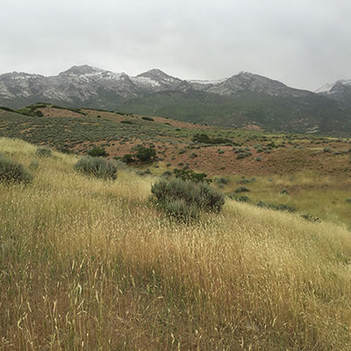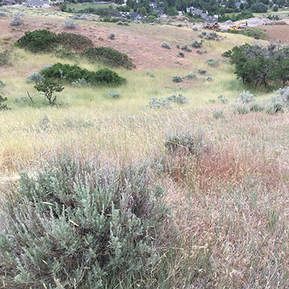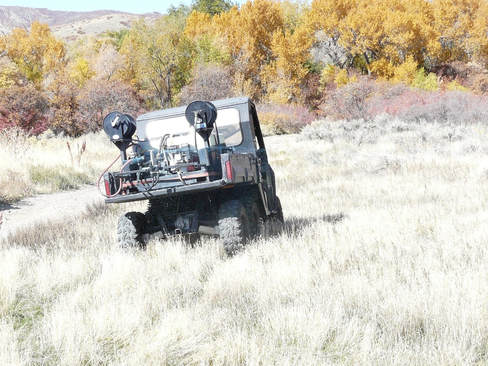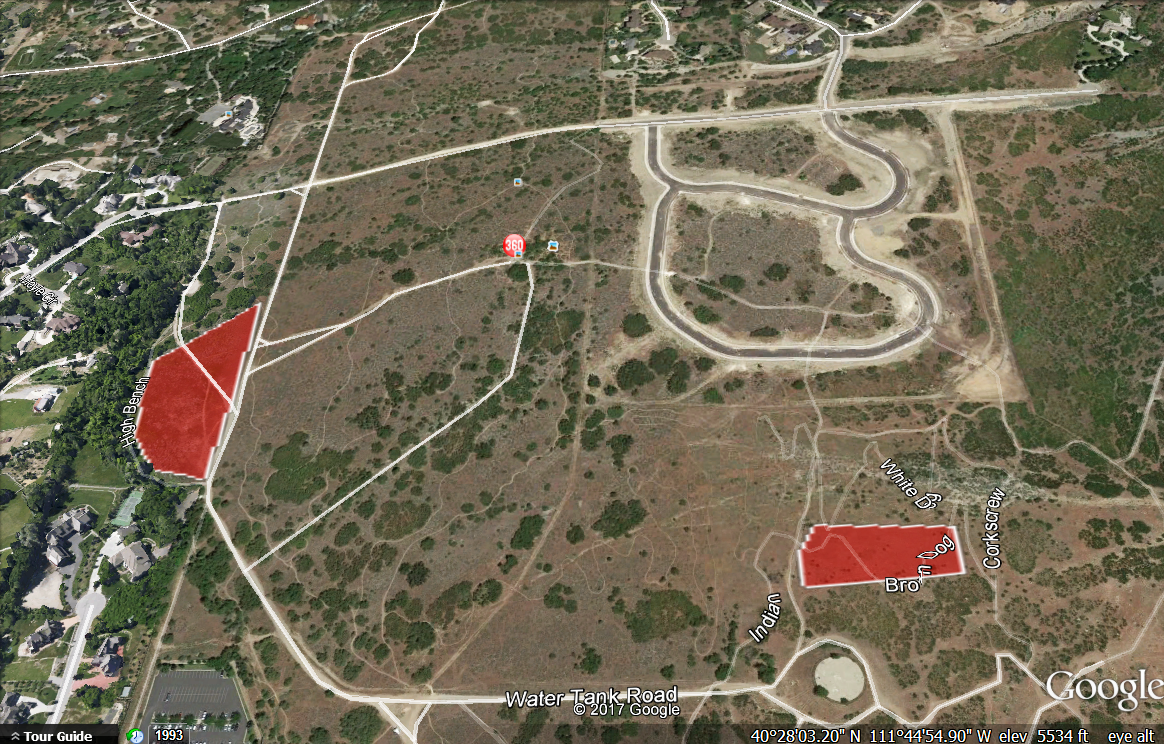As we work to heal the earth, the earth heals us.
- Robin Wall Kimmerer -
- Robin Wall Kimmerer -
Traverse Mountain/Lambert Park Restoration Project
UTAH DIVISION OF WILDLIFE RESOURCES

The Utah Division of Wildlife Resources in partnership with sportsman groups has funded a habitat restoration project for the Traverse Mountain and Lambert Park areas. The objectives of the project are to improve the shrub and other native vegetation in open space areas for the benefit of wildlife.
This area is particularly valuable for deer and elk during the winter when deep snow pushes them down from higher elevation mountains. With all of the development in this area these habitats are largely being lost. This makes it that much more important to improve the remaining habitat.
The habitat has been degraded by many invasive weed species such as cheatgrass, bulbous blue grass, and annual rye. These grasses are very competitive and eventually kill out other vegetation. Also, gamble oak has taken over since there are few fires to suppress its growth and allow for understory to grow. The plan is to spray these weeds with herbicide and plant native shrubs and other vegetation that deer and elk like to eat instead. Also the plan is to use mastication machines to thin the oakbrush in areas where it is too thick.
This area is particularly valuable for deer and elk during the winter when deep snow pushes them down from higher elevation mountains. With all of the development in this area these habitats are largely being lost. This makes it that much more important to improve the remaining habitat.
The habitat has been degraded by many invasive weed species such as cheatgrass, bulbous blue grass, and annual rye. These grasses are very competitive and eventually kill out other vegetation. Also, gamble oak has taken over since there are few fires to suppress its growth and allow for understory to grow. The plan is to spray these weeds with herbicide and plant native shrubs and other vegetation that deer and elk like to eat instead. Also the plan is to use mastication machines to thin the oakbrush in areas where it is too thick.

In addition to benefiting wildlife these projects will help to reduce the risk of fire. The weedy annual grasses like cheatgrass dry out early in the summer leaving the hillsides yellow and dry by late June. This creates a fuel source during the worst time of year for fires. Many of the plant species that will be planted remain greener longer into the summer and will reduce the threat of fire. Oakbrush is also extremely flammable and will spread a large fire very quickly. To slow down such fires and to protect property it is important to remove patches or lines of oakbrush to serve as a fire break.
This project will improve habitat for wildlife and give wildlife another option rather than eating vegetation in people's yards. This will hopefully reduce conflict between humans and wildlife. Part of the program will be to educate the public on how to better coexist with wildlife, how to be safe and help wildlife stay safe. Lastly, the project will protect life and property by reducing the risk of fire to the community.
This project will improve habitat for wildlife and give wildlife another option rather than eating vegetation in people's yards. This will hopefully reduce conflict between humans and wildlife. Part of the program will be to educate the public on how to better coexist with wildlife, how to be safe and help wildlife stay safe. Lastly, the project will protect life and property by reducing the risk of fire to the community.
Lambert Park Herbicide Treatment--Fall of 2017
|
In the fall of 2017l the Utah Division of Wildlife Resources began its work to improve some of the wildlife habitat in Lambert Park. UDWR habitat biologists Robby Edgel and Mark Farmer identified two areas totaling 5 acres in Lambert Park that are overrun by weedy non-native species (see red polygons on map below). These areas have largely become monocultures of cheatgrass. A monoculture is when one species of vegetation takes over and replaces all other species, It will drastically reduce the value of that land for wildlife and with cheatgrass it creates a very serious wildfire hazard. Cheatgrass is not native to Utah and was introduced by European settlers. This grass has since taken over many areas of Utah and essentially destroyed the value of those habitats for Utah’s native wildlife. To see a picture of cheatgrass, visit our Invasive Species page! |
|
Two areas in Lambert Park were identified as a good place to start this year and see how effective the treatments are before expanding to treating the entire park and surrounding hillsides. A UTV and herbicide-spraying machine was used to spray an herbicide called Plateau over the selected area (see the photo above). Plateau is an herbicide that prevents new seeds from germinating. This is effective at reducing cheatgrass, because cheatgrass is an annual plant. This means that it only lives one year and is dependent on its seeds to persist. Therefore, an entire new generation of plants can be wiped out if you prevent the seeds from germinating. Plateau is a good chemical to use in an area that you do not want to kill other perennial plants like sagebrush that should be preserved. It is safe for rangeland use and is a very useful tool in habitat restoration. However, because it is such a soft chemical it sometimes is not very effective at killing everything that is targeted. Other factors such as moisture and how well-timed the application is can alter the success of the treatment. Hence, to not waste money the small test area was chosen to see how well it works. If it does work well a larger area could be sprayed by helicopter in the future.
|

